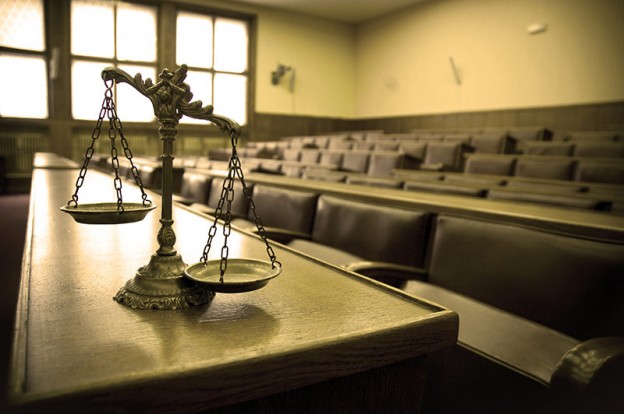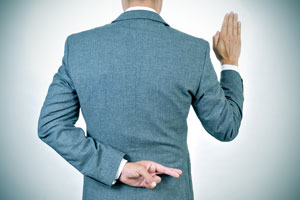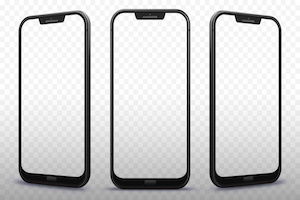After the Supreme Court’s Daubert decision, judges may only admit expert testimony that is based on a reasonable methodology. A question that divides federal courts is whether expert opinions should be admitted if a jury could reasonably regard the expert’s methodology as reasonable even if the judge doesn’t. A federal advisory committee may soon propose a change in the rule that resolves that question in favor of judges rather than juries.
A Brief History of Rule 702
Rule 702 of the Federal Rules of Evidence governs the admissibility of expert testimony. The first version of the rule, adopted with the other Rules of Evidence in 1973, allowed qualified witnesses to express expert opinions if their “scientific, technical, or other specialized knowledge” would “assist the trier of fact to understand the evidence or to determine a fact in issue.” The rule made the expert’s qualifications a matter of “knowledge, skill, experience, training, or education.”
The rule said nothing about the judge’s role in determining whether the expert’s opinions were reliable. When Rule 702 was adopted, federal courts followed the Frye standard of admissibility. Using that standard, courts admitted expert opinions based on scientific techniques that were, in the judge’s opinion, “generally accepted” as reliable in the relevant scientific community.
The Frye standard prevented juries from hearing opinions that were based on new or novel theories that, while reliable, were not yet generally accepted. The standard therefore kept juries from hearing reliable evidence that might help them decide the case. At the same time, the Frye standard allowed juries to hear unreliable testimony because courts had been ruling for years that the testimony was “generally accepted” as reliable. The Frye standard was particularly harmful in criminal cases. Unreliable forensic evidence, including bite mark and hair comparisons, has contributed to the widespread phenomenon of wrongful convictions.
In 1993, the Supreme Court purported to cure the deficiencies of the Frye standard by creating a new rule. The Daubert standard (named after the case in which it was adopted) expands the judge’s “gatekeeper” role in deciding whether evidence is sufficiently reliable to be admitted.
The Daubert decision held that Rule 702 was inconsistent with the Frye standard. The Court noted that the drafting history of Rule 702 did not mention Frye and concluded that “a rigid ‘general acceptance’ requirement would be at odds with the ‘liberal thrust’ of the Federal Rules and their ‘general approach of relaxing the traditional barriers to opinion testimony’.”
The Daubert court jettisoned the Frye standard. To fill the void, it created a new rule that, as interpreted by some judges, is incompatible with the “liberal thrust” of Rule 702 and its goal of relaxing barriers to expert testimony.
The Daubert standard broadened the admissibility of expert opinions by making reliability, rather than general acceptance, the dominant consideration in the judge’s analysis. At the same time, the standard narrowed the admissibility of expert opinions by requiring the judge to exclude expert opinions unless they are based on a reliable methodology that the expert applied to adequate facts in a reliable way.
Rule 702 was amended in 2000 to reflect the Daubert holding. The rule was amended again in 2011 to clarify its language. The current rule states:
A witness who is qualified as an expert by knowledge, skill, experience, training, or education may testify in the form of an opinion or otherwise if:
(a) The expert’s scientific, technical, or other specialized knowledge will help the trier of fact to understand the evidence or to determine a fact in issue;
(b) The testimony is based on sufficient facts or data;
(c) The testimony is the product of reliable principles and methods; and
(d) The expert has reliably applied the principles and methods to the facts of the case.
Criticisms of Current Rule
The Daubert standard as embodied in the current version of Rule 702 has been criticized for its lack of clarity. Some judges view the Daubert standard as expanding the admissibility of expert testimony. Those judges typically leave it to juries to decide whether to accept or reject expert opinions that could reasonably be regarded as reliable. Other judges view their role as determining reliability according to their own strenuous standards without regard to how a jury might view the evidence.
Critics who believe judges too often allow juries to evaluate expert testimony are advocating another change in the rule. Echoing the views of the insurance defense industry, those critics claim that judges are failing to exercise their role as the “gatekeepers” of reliability.
The critics cite anecdotal evidence to create the illusion of a widespread problem. One journalist, relying on his distant memory of an expert witness who gave allegedly inconsistent testimony in two different cases, recently wrote that he “wouldn’t believe a word from an ‘expert’ witness.” The journalist did not seem to appreciate that experts base opinions on facts and that different facts in different cases lead to different opinions.
Unfortunately, the reporter’s perspective advances the strange but popular belief that expert opinions do not reflect objective reality but are simply what the expert chooses to regard as true. That belief is encouraged by political assertions that objective facts are “fake news” and by attacks upon scientific experts who warn the public about dangers (such as global warming) that politicians would prefer to ignore. Attacks on expertise have given birth to a subculture that rejects expert opinions in favor of biased opinions on the ground that an unsupported opinion is just as valid as one based on facts, experience, education, and sound reasoning.
Some critics have suggested that judges should restrict expert testimony in civil cases to prevent “runaway juries” from deciding cases based on emotions rather than facts. Since those critics rarely express concern that juries convict innocent defendants because of emotional reactions to evidence of victimization, the critics seem to be more interested in protecting businesses from the consequences of their carelessness or misconduct than in protecting the right of litigants to have disputed facts resolved by juries.
Critics who complain that judges are inadequate gatekeepers often represent or work for industries that are sued for harming the public with dangerous products or environmental hazards. Those critics tend to brand experts as unscrupulous, but only when they testify for plaintiffs. The critics argue that Daubert was meant to limit expert testimony offered by plaintiffs despite the Supreme Court’s recognition that “relaxing the traditional barriers to opinion testimony” was the very purpose of Rule 702.
Proposed Revision of Rule 702
A recent report from the Advisory Committee suggests a change in Rule 702 that the committee may ask the Supreme Court to adopt. The change results from the concern that “in many cases expert testimony is permitted because the judge thinks that a reasonable jury could find the methods are reliable.” The Committee appeared to be horrified by the thought that jurors are just as capable of evaluating the reliability of evidence as judges. A who allows jurors to evaluate testimony that they could reasonably view as reliable does so because the judge respects the jury’s role in evaluating evidence.
Judges, after all, are not scientists. There is no reason to believe that judges are any more capable than jurors of understanding and evaluating expert testimony. As a Fourth Circuit decision reminded us in 1934, “Questions of fact are questions for the jury; and they do not become questions for the court merely because their solution may require scientific knowledge or expert opinion.”
Some members of the committee, however, have concluded that only judges have the wisdom to decide whether an expert’s methods are reliable. Their argument that judges should substitute their view of an expert’s reliability for a reasonable view that a jury might take is consistent with a disturbing trend to remove cases from juries — a trend that some scholars decry as reflecting a pro-business bias. Their apparent goal is to change gatekeepers into gate closers.
The report proposes “an amendment to Rule 702 that would clarify that expert testimony should not be permitted unless the judge finds by a preponderance of the evidence that each of the prerequisites are met.” In other words, even if a jury could reasonably find that an expert’s methodology was reliable, a judge who feels otherwise can prevent the jury from making that determination. The proposal represents one more effort to chip away at the American ideal that juries, not judges, should decide cases.
As Judge Kathleen O’Malley recently wrote, the jury is a vital tool in a deeply divided country, a tool that “protects all of us from overreach by the other two branches of government.” In Judge O’Malley’s view, “If two minds are better than one, nine or twelve are better still.” Judge O’Malley is confident that jurors acting collectively are just as capable as judges of evaluating expert testimony, and that it is arrogant for judges to suggest otherwise.
The advisory committee meets again in June 2021. Whether and when the committee will decide to propose a revision of Rule 702 is unclear. Equally uncertain is whether the Supreme Court would agree that it is wise to undermine expert testimony by giving judges more power to prevent juries from considering expert opinions that jurors might reasonably regard as being based on a reasonable methodology.













